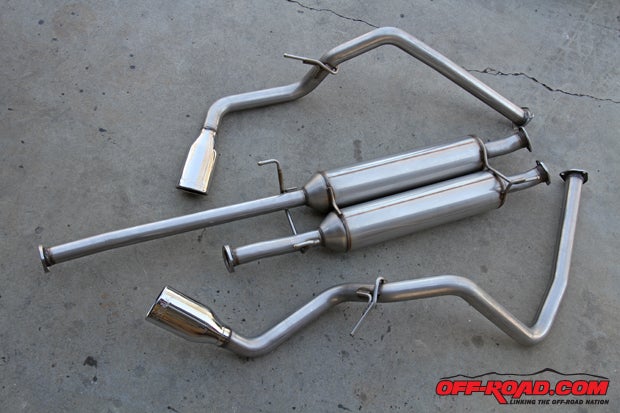
Toyota Racing Development, or TRD as most know it, has served a number of roles for Toyota over the years. First started as an aftermarket parts distributor and speed shop in 1979, it then turned into an R&D division of Toyota that went on to share a 30-year partnership with one of the most recognizable off-road legends in Ivan ďIron ManĒ Stewart. TRD has now grown into one of the most recognizable monikers on Toyota trucks.
Back when we drove its TRD Pro models earlier in the year, Toyota officials told us that roughly 40 percent of the Tacomas it sells are equipped with a TRD package. Although TRD stickers on the rear quarter panel of Toyota truck beds are certainly a recognizable moniker for its upgraded trucks, it might go unnoticed by some that TRD is also a parts and performance division that offers a number of performance parts through dealers to upgrade their vehicle. When we first drove the TRD Pro Tundra, we were very impressed with its tough-sounding exhaust system. We later came to find out this part was already available in the TRD catalog. We wanted to check the system out. Toyota obliged.
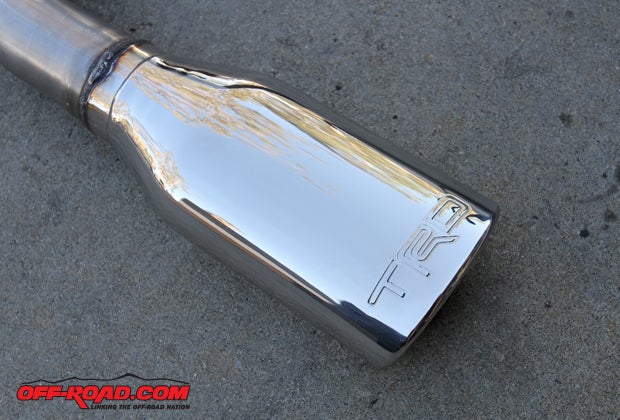
The TRD Performance Dual Exhaust System for the Toyota Tundra is a cat-back exhaust design that will fit 2010-2014 Tundra models equipped with the 5.7-liter V8 motor. It fits the Double Cab models with the standard bed but is not applicable to single-cab Tundras or long-bed setups.
Get the Flash Player to see this player. |
The dual exhaust system replaces the stock unit to reduce backpressure for a claimed improvement in low-end and midrange torque, and an improvement of 5 to 8 wheel horsepower over stock. The stainless-steel exhaust replaces the single-pipe stock unit to split into dual pipes that exit just under each rear corner of the Tundra. For added personalization, TRD-logos are etched onto the polished dual tips. Aside from the performance improvements, the TRD Dual Exhaust provides the a deep, throaty rumble that gives the 5.7-liter motor added growl all while meeting the legal 95-decible noise limit.
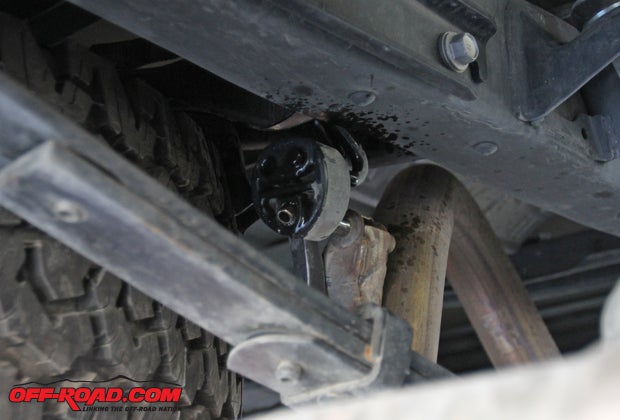
As we said, our first impression of the Dual Exhaust System came during the TRD Pro drive. We were impressed with the added rumble from the exhaust that, in our opinion, gives the powerful 5.7-liter a sound that compliments the motor; we always felt the stock motor felt a little strangled and too quiet for its capability.
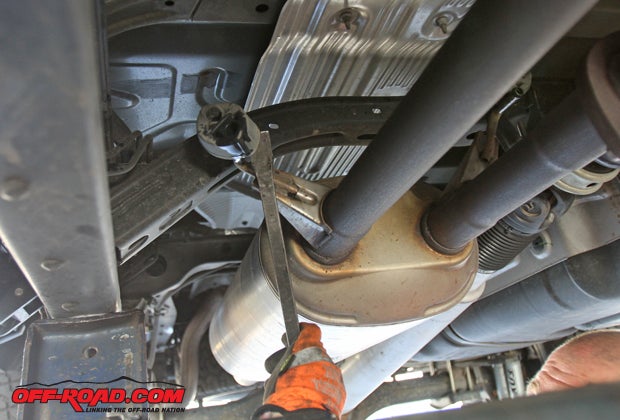
After speaking to TRD engineer team manager Ted Moncure during the event, he filled us in on some of the backstory on the development of the exhaust. In developing the system, he said the team paid careful attention to the power, sound, vibration and drone balance before settling on this particular setup. What was most impressive during our chat was his note that the TRD team actually tested 30 different exhausts before settling on this one, a considerable test pool when you consider that a five or six different test systems is often a more realistic number. Toyota clearly wanted to get this Tundra system right the first time.
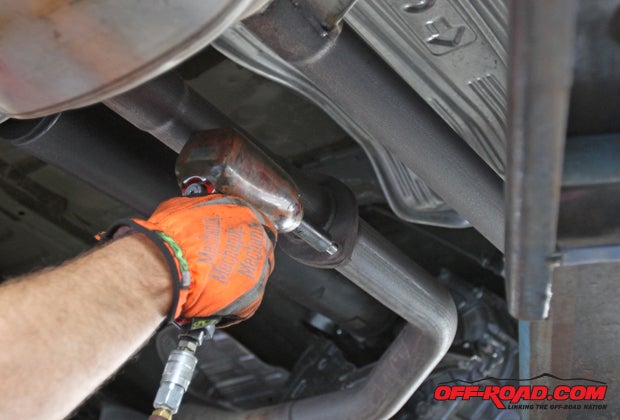
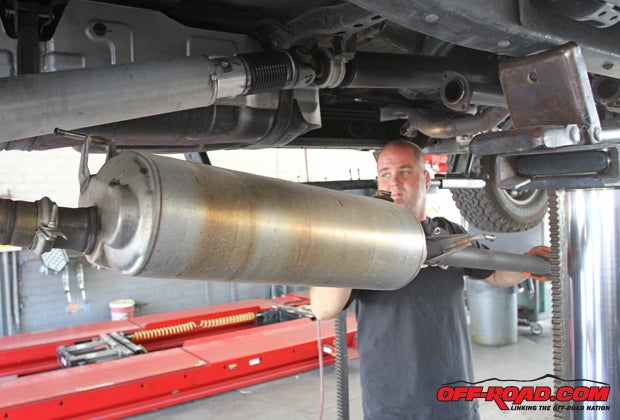
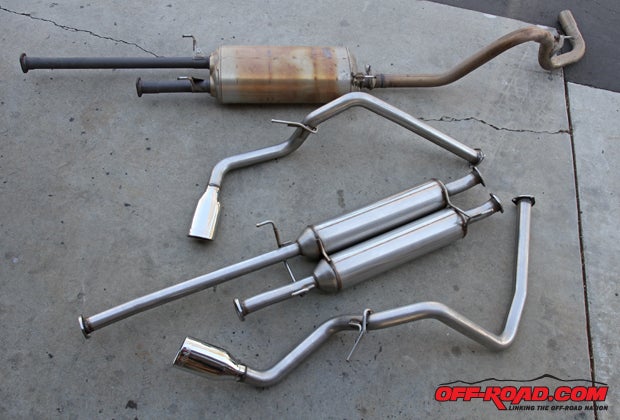
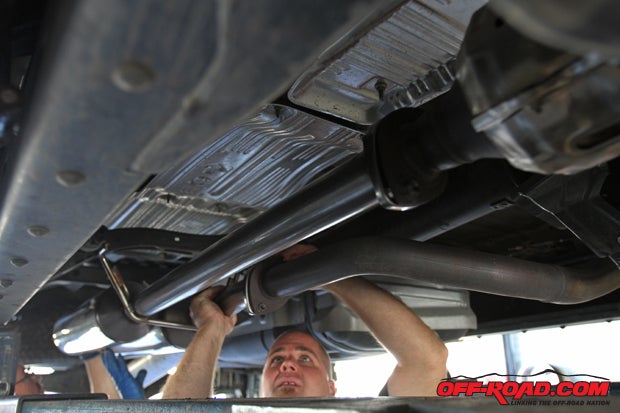
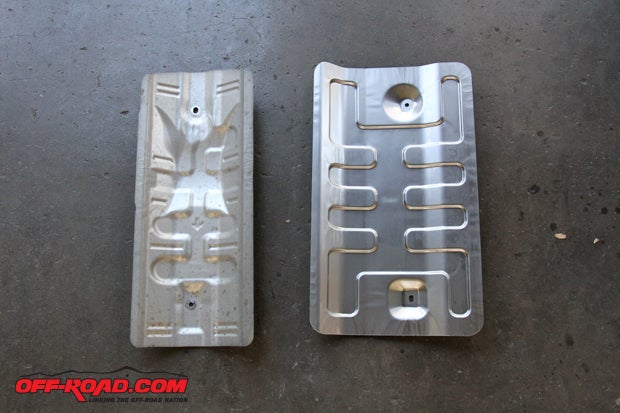
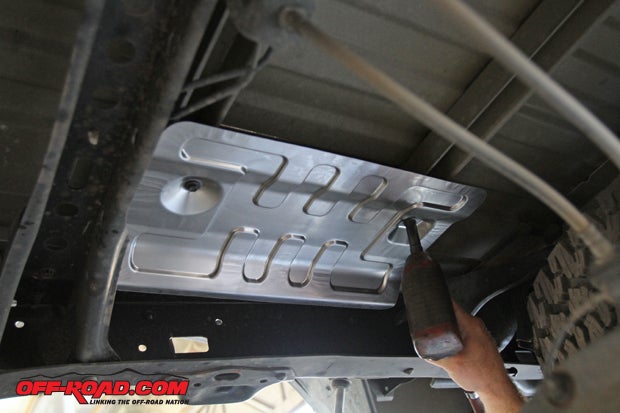
We walked away from the TRD Pro launch impressed with the exhaust, and we wanted to upgrade our Tundra with the same setup. Once we got our hands on a system, we headed over to SoCal SuperTrucks in San Bernardino, California, to help us with the install. Although installation is fairly straightforward and could be done in a driveway or garage, the access to SoCal SuperTrucksí lift certainly made the process a little quicker. Our only suggestion for at-home installation would be to have an extra set of hands to help when taking apart and installing the exhaust components.
The system uses the stock hanger assemblies and includes an extra one for the new additional exhaust pipe. The kit comes with all the necessary hardware, including two new metal gaskets that will be used in addition to the two stock ones that will be reused from the OE exhaust. The kit also includes a new larger heat shield that will replace the stock unit as well.
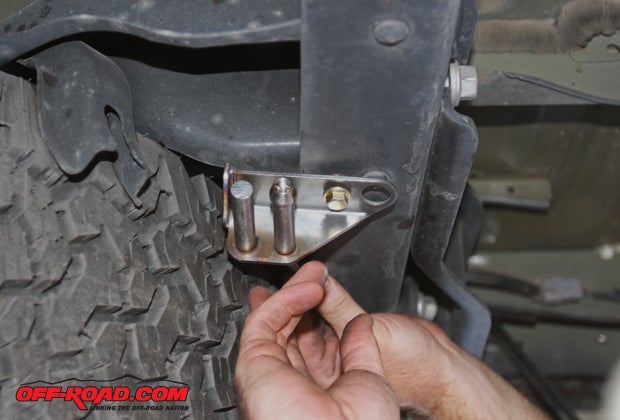
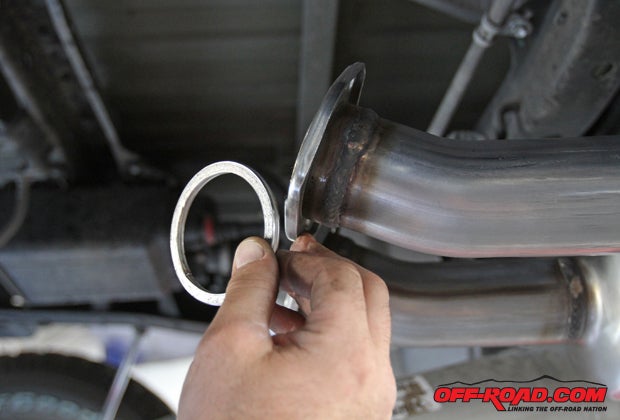
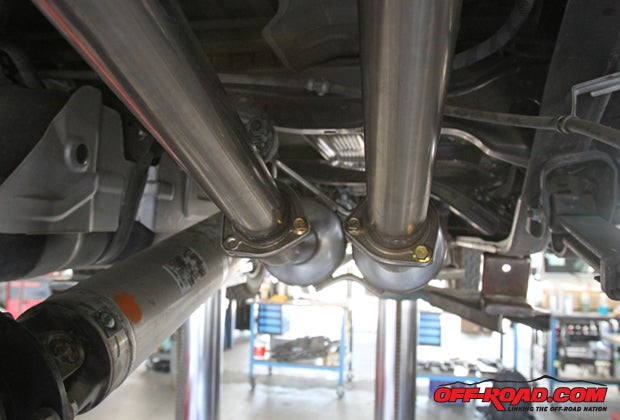
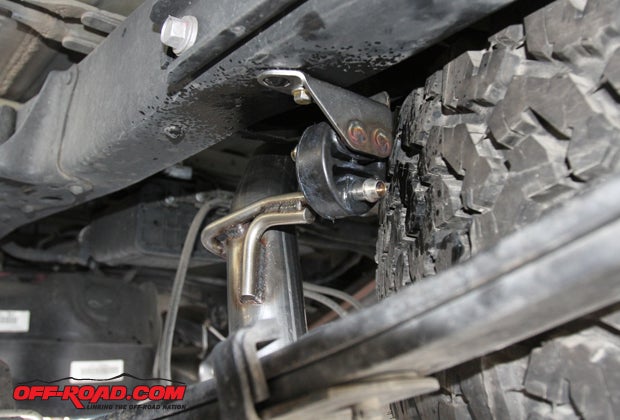
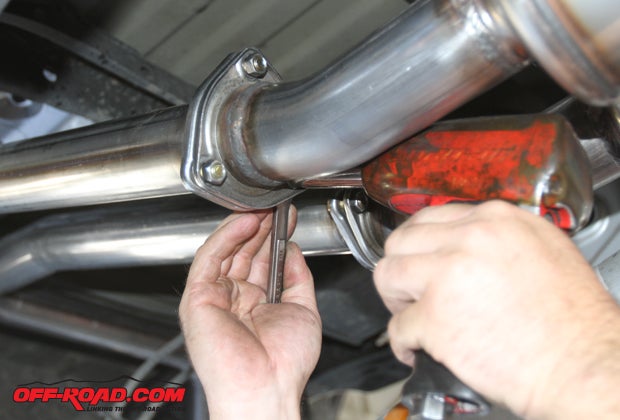
With SoCal SuperTrucks technician Ryan Poe helping us, the TRD Dual Exhaust took a little less than two hours from start to finish to install. It can be done at home in the garage or driveway, but access to a lift will cut down on the install time. As for the exhaust performance, we definitely notice a livelier bottom end and midrange when accelerating. The powerful 5.7-liter motor really comes to life with the exhaust, as it feels much less strangled by the stock exhaust.

The sound is truly great on the Dual Exhaust Kit as well. It provides added growl with the twist of the key, and the added rumble when accelerating is definitely a rewarding sound. Whatís most impressive is the exhaustís pitch never drones annoyingly or becomes a nuisance at cruising speeds. The TRD teamís exhaustive search (pun intended) when picking the right setup for this kit was worth the effort, as it is the perfect blend of a more aggressive growl without being overbearing.
The Dual Exhaust Kit can be ordered from your local Toyota dealerís part counter. It has a suggested retail price of $1000 (parts only), which isnít going to be the cheapest kit on the market, but in our opinion, itís worth every penny. If you own a Tundra and have considered an exhaust upgrade, the TRD Dual Exhaust Kit should be near the top of your list.
CONTACT
SoCal SuperTrucks
909/383-5454
SoCalSuperTrucks.com
Toyota Racing Development
800/331-4331
ToyotaRacing.com


 Your Privacy Choices
Your Privacy Choices